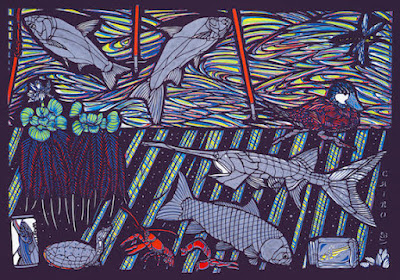 |
| French soldier at lookout, WWI |
grisly:
ɡrizlē / adjective/
"causing horror or disgust"gruesome:
ɡro͞osəm/ adjective/
"causing repulsion or horror"
Synonyms: ghastly, frightful, horrifying, fearful, hideous
* * * * *
I recently had a discussion with a friend with whom the topic of World War I came up. I was recommending that he watch Kubrick's Paths of Glory again, as I had just revisited it recently. This led to discussions about books, of which he made three recommendations: The Great War by G.J. Meyer, Goodbye To All That by Robert Graves, and Poilu: The World War I Notebooks of Corporal Louis Barthas, Barrelmaker. The latter two I requested the next day from the library and then purchased Meyer's volume as a Christmas present to myself.
The word "poilu" is literally translated "hairy" but its meaning is similar to the dismissive term "grunt" that is used in our American lingo. After a few short pages I became utterly immersed with this detailed and insightful account of life in the trenches and its horrors. The words grisly and gruesome only begin to describe the experience for these grunts who suffered the most appalling indignities.
One of the recurring themes in the narrative is how much the soldiers despised their commanders, and rightly so. The abuse they endured for no reason and the lack of any kind of empathy or attempt to relate to the circumstances these poilu were being sent into is unbelievable.
A second theme that closely parallels the first is that over time there developed a greater camaraderie between the German grunts and poilu than either group of fighting men with their own officers.
On one occasion the French troops were crawling forward in a heavy rain through the mud and, emboldened by the silence they encountered, they arrived at the German trench they had been ordered to take. They found it stuffed with corpses. There was only one wounded German, who was taken away and the trench reoccupied.
"They tossed out the dead bodies to both sides, front and rear, and covered them insufficiently with the earth they shoveled out while deepening the trench. But the steady rains uncovered the bodies, little by little, and they had to abandon the trench. A sign post at its entrance bore this lugubrious inscription: Trench of Death. In truth, there were only dead men there." (p. 34-35)
Over and over the weather brings additional challenges to bear upon the men. It becomes apparent that there will never be any kind of "winning" in this war. The real objective is to not lose one's sanity."The steady rain brought on landslides which uncovered many French cadavers alongside our trench, which had been taken on September 25. They had been tossed out of the trench and insufficiently covered with a bit of dirt. It wasn’t unusual to be grabbed while passing by a skeleton hand or a foot sticking out of a trench wall. We were so blasé about it that we paid it no more attention than to a root we might trip upon in our paths." (p. 134)
And then there were the lice.
"We had six days of rest at Agnez-les-Duisans. With heavy rains each day forcing us to stay inside our billets, our primary occupation was hunting lice. Each of us carried thousands of them. They found a home in the smallest crease, along the seams in the linings of our clothing. There were white ones, black ones, gray ones with crosses on their backs like crusaders, tiny ones and others as big as a grain of wheat, and all this variety swarmed and multiplied to the document of our skins.
"And these lice bore in as well on the tough skin of a rude peasant as on the soft skin of an effeminate Parisian. It made no distinction among levels of society. To get rid of them, some rub themselves all over with gasoline every night; others carried sachets of camphor, or powdered them selves with insecticide; nothing did any good. You'd kill 10 of them and 100 more would appear.
"This all came from the repulsive filthiness of our bedding, which was hardly ever changed, and the difficulties we had and doing laundry. The cold was so pervasive that as soon as everything was washed it froze solid. Where could we thaw out and put it out to dry?"

If a soldier requested leave because his frostbitten feet made it impossible for him to walk, the soldier would be court-martialed for making excuses to avoid having to fight. And just as in Paths of Glory, sometimes the officers would order the shooting of their own men if they failed to run forward into blistering machine gun fire.
Reading Barthas puts a perspective on the realities of that time. On page one he describes the manner in which the coming war is announced. There is a drumroll in his village followed by the declaration of a general mobilization, which is a prelude to war.
Barthas writes, "This announcement, to my great amazement, aroused more enthusiasm than sorrow. Unthinking people seemed proud to live in a time when something so magnificent was about to happen... Everyone got ready, at a fever pitch, as if they really feared not getting there in time before the victory was complete."
* * *
“Ah, the notebooks of Louis Barthas! This book has profound historic value. It is also a genuine work of literature.”—François Mitterrand, former president of France
* * *
Related Links
The Great War: So Much Sorrow, And for What?
Paths of Glory (A 2010 review)




































